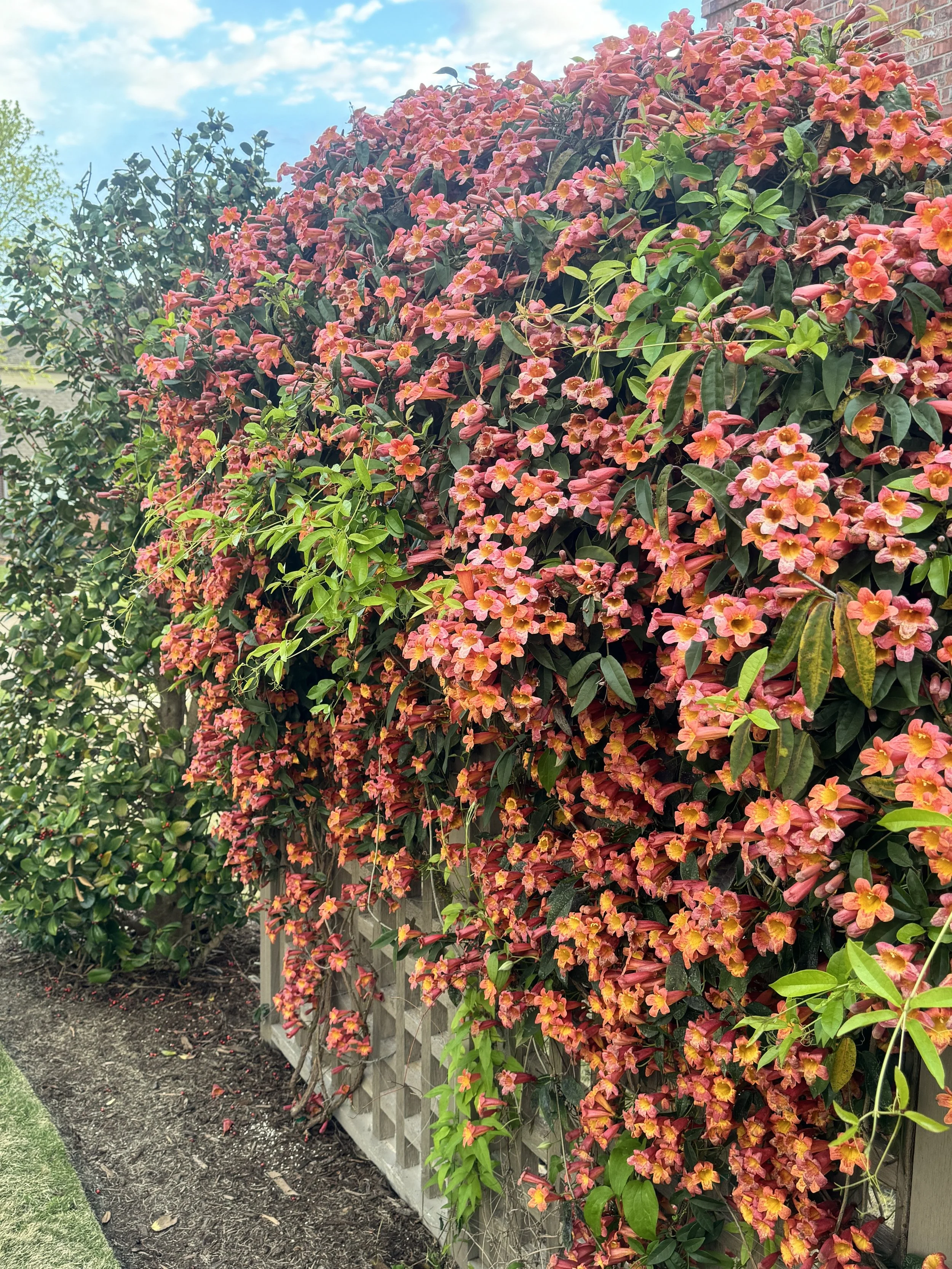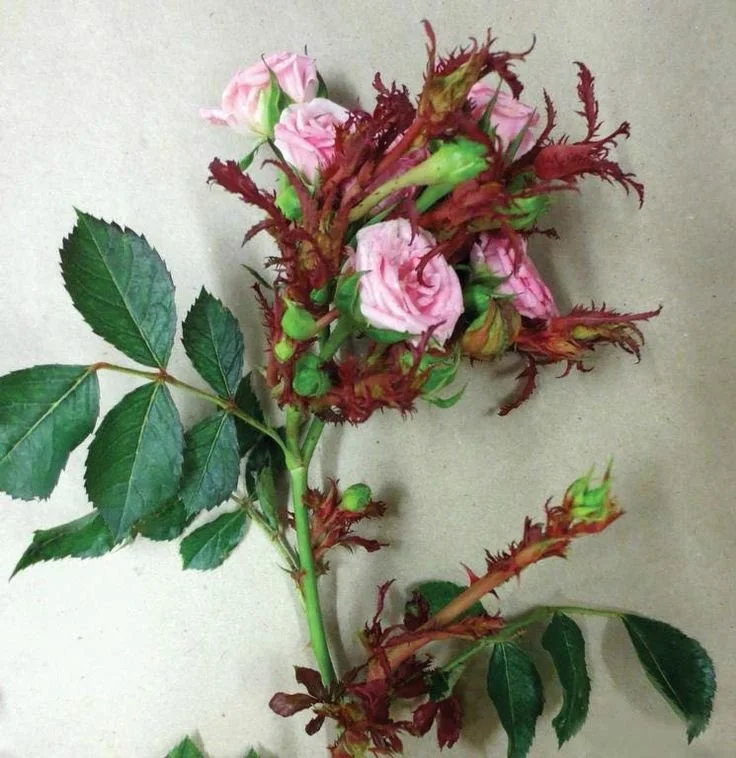4 Landscape Design Hacks you Need to Know
Windows are a critical consideration in every home we design. But what is the point of beautiful windows if you have nothing beautiful to look at? As an interior design firm in Texas, most of our clients don’t live in the mountains or on the ocean, so landscaping sets a critical tone for our home — inside and out. Here is Lark Interior’s landscape designer’s best tips to a beautiful yard:
Low Maintenance Doesn’t Mean What You Think it Means
A “low maintenance” yard is the number one landscape design request fielded by our landscape designer, Kristin Kemsley. And she gets it. Who has time for yard work? She wants to binge Season 4 of the Crown in her pjs too. (Just kidding. She’s wants to be pruning and pulling weeds, knee deep in dirt. But I want to watch the Crown.)
Here’s a surprising fact for you. Guess what the number one highest maintenance plant is? Go on - guess. Are you picturing it? WRONG! It’s plain old grass. Think about it: you have to mow it, edge it, manage its water needs, weed it, and fertilize it. It’s particularly Kim Kardashian.
Landscape design tips from interior designer Janelle Patton
A beautiful shrub, on the other hand, may need to be fertilized a few times a year or lightly pruned now and then, but otherwise it’s virtually maintenance free.
So next time you turn your nose up at a stunning perennial bed because it “too high maintenance,” start adding up the time (or money!) you spend maintaining that lawn. A pretty limelight hydrangea or some dreamy false cypress might start looking like a cheap date real fast.
2. You Need to Treat Your Plants like Pets
If I neglected to feed my dog, Scout, her vigilant squirrel patrol of our yard would likely become pretty listless. Why? Because she’s a living thing – and requires care and nutrition to thrive.
Here’s a fun fact you may remember from high school biology: plants are living things too. While it feels obvious with pets, people seem to totally forget that plants also require care. In fact, I’d like you to stop and consider when you last fed your plants. If the answer is “I don’t know,” get yourself a bottle of Miracle Grow STAT – your plants are starving.
We often have clients contemplate ripping out old landscaping and starting over because the old stuff “it just isn’t doing well.” Our first question is always, are you fertilizing it? If the answer is no, then the problem isn’t the plants – it’s the people.
Here’s a simple fertilization routine. At the start of spring – just as things are starting to leaf out – put a capful of this slow-release fertilizer around the base of each shrub and tree in your yard. It shouldn’t take you more than 45 minutes (less if you’re a mean mom like me and make your kids help!) Then, using the Miracle Grow attachment on your hose, fertilize everything at least once a month during the growing season. Easy-peasy. Want to see the result of these simple steps? Check out my Crossvine. I took this photo today:
Crossvine in a Dallas garden- Dallas Texas landscape design tips
3. Location, Location, Location
Kristin likes to tease the rest of us that our job is way easier than hers – sofas don’t die or grow too big or get diseases (unless you count the slime your grandson brought over last week.) We don’t have to worry about how many hours of sunlight an end table will get or how many freezing days a year occur in a living room.
However, all of these things are critical factors as she does her design.
The most important thing in any landscape design is location: right plant, right place. And right place = combined factors of sunlight, mature size of the plant, soil makeup. It almost takes an expert to navigate it (surprise! That’s why it’s best to let a professional handle the design).
4. Variety is the Spice of Life (Literally)
Did you know there are millions of plant varieties out there? Literally millions. You wouldn’t guess it from driving around Dallas, though. We see the same 8-10 plants used over and over and over. If I have to stare at one more Savannah Holly, I’m going to gag. Here’s the problem with this situation:
Reusing plants so frequently causes disease. Have you heard of rosettes disease (aka witch’s broomstick)? If you haven’t heard of it, you’ve probably seen it. Any guess what caused it? The absolute bonkers way everyone in Dallas planted Knock-Out Roses through the 90s and 2000s. It was the only variety of rose anyone here was planting. And boy did all those rose siblings create a lovely environment for disease to develop. The result? An incurable mite that torments Dallas roses to this day.
It’s BOOOORING. Do you want to eat pasta with butter every meal of your life? Me either. Nor do I want to look at the same 8 plants in every yard in every suburb of Dallas — and Texas at large. And let me be clear – there are MANY plants that thrive even in our tough conditions. My yard is full of them. I’ve got peonies and spirea, and a cherry tree, and clematis – and it’s all lovely and thriving. So stop wearing pink every Wednesday, and discover the world of tie dye!
A Rose with Rosette’s Disease (aka, Witch’s Broomstick) in Dallas Texas
If you’re interested to learn more about what does best in the Dallas climate and what could work for your yard- reach out for a consult today and we can get you in touch with our landscape designer.



